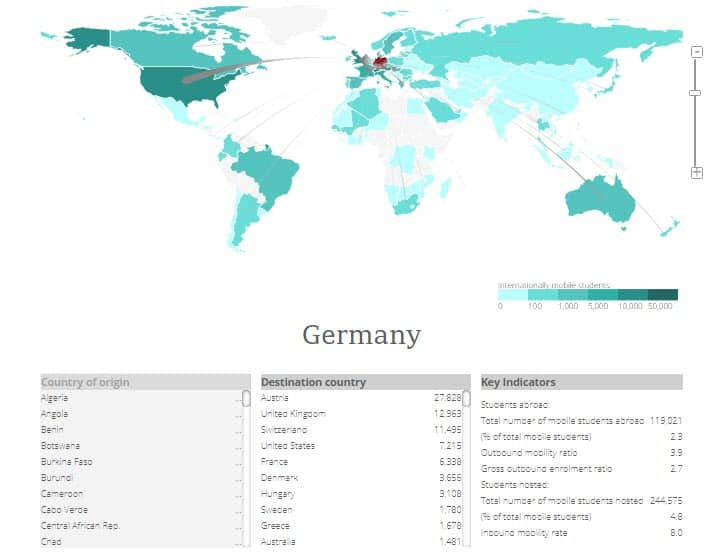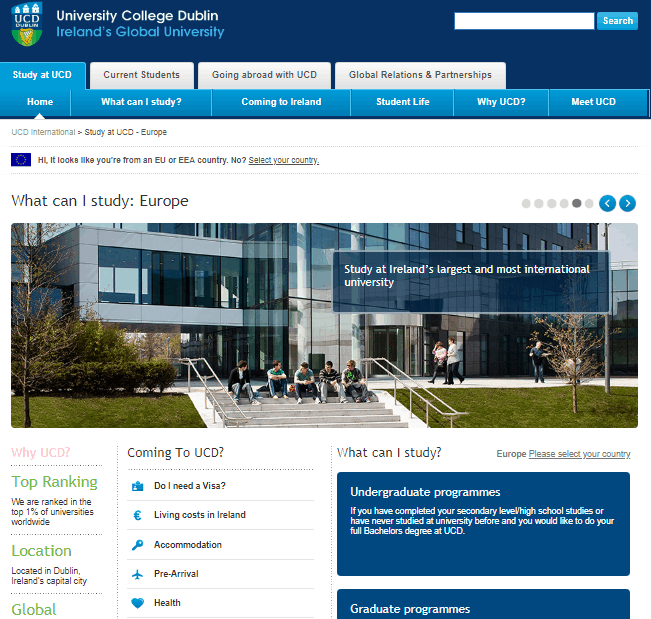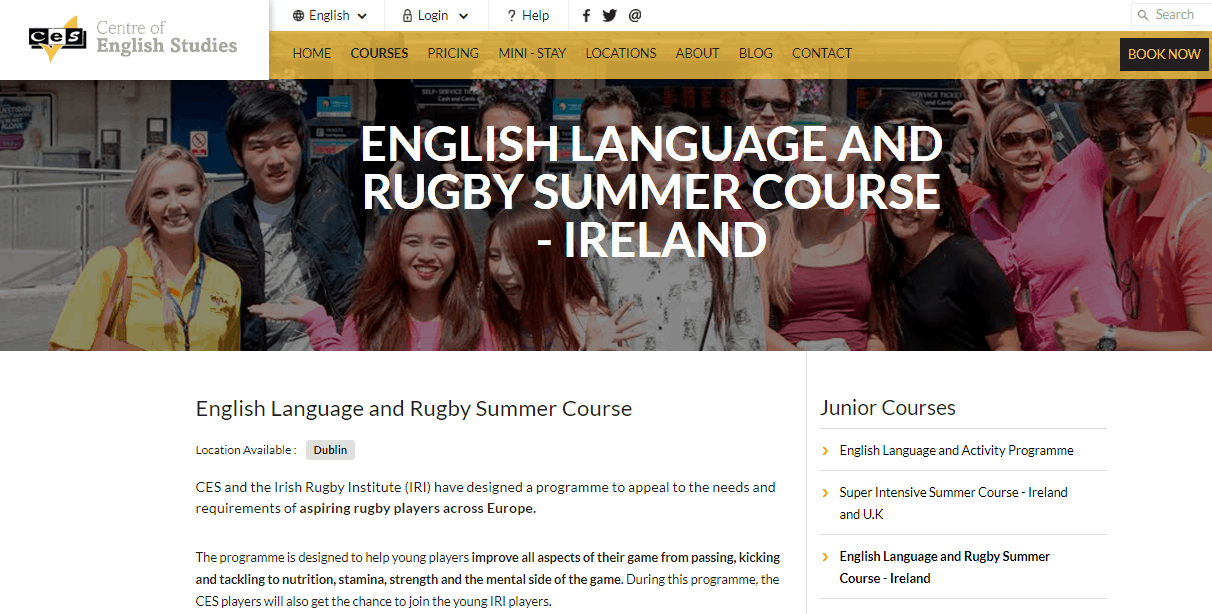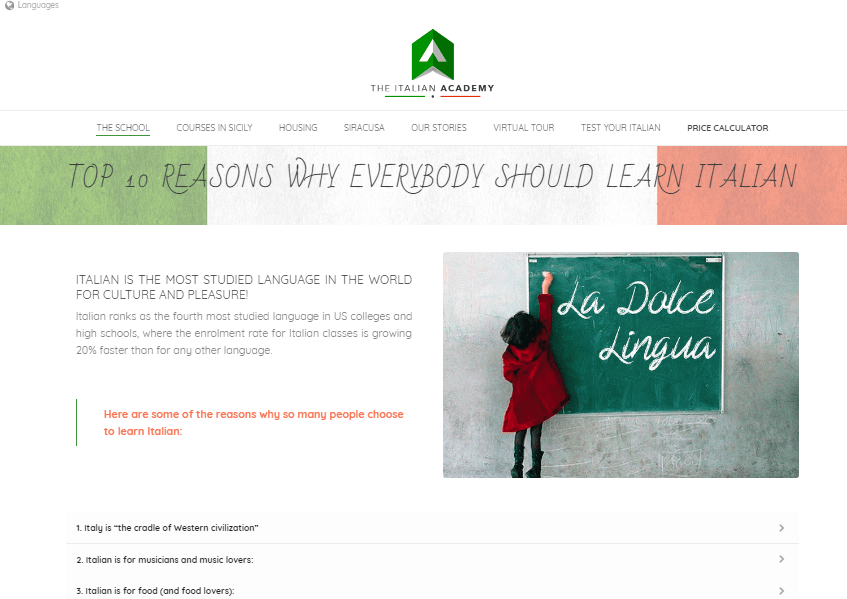
When discussing new opportunities for international students, experts are often keen to talk up the prospects of markets like India, China, Latin America, and Southeast Asia. These places have developing economies, growing middle classes, and student populations keen for better education and career opportunities than their homelands can currently offer.
Too often, however, one the largest sending markets of international students is ignored: Europe. Every year, hundreds of thousands of European students travel abroad to seek university degrees, language education, short-term study opportunities and everything in between, both on other continents and within neighbouring European states. There are currently more international students worldwide from Germany than Saudi Arabia, more from France than Nigeria, and more from Italy than Iran.
Often more highly educated, financially stable, and particular than potential applicants from other regions, prospects from Europe represent a unique challenge for schools. Here’s what your institution needs to consider.
Where do European International Students Study?
Generally, the majority of European international students tend to study in other European countries. For instance, the continent’s largest source market is Germany, which sends over 119,000 students abroad every year. The most popular destinations for German students are Austria, the UK, and Switzerland, with large numbers also enrolled in France, Denmark and Hungary. Only the USA, the fourth most popular destination, cracks the German top ten.

Similarly, the most popular study destinations for Italian students – another large market of over 65,000 – are the UK, France, Austria, Spain, and Switzerland.

This suggests that there is much to be gained from European schools focusing on recruiting from their close neighbours. Promoting the obvious advantages, such as the lack of visa restrictions in the EU, ease of travel, and similarities in culture and climate can be a good place to start.
Example: The University of Twente in the Netherlands ran this webinar specifically for prospective students in neighbouring Germany. The session focused on the close proximity and similarities between the two nations, while still promoting the differences in culture and lifestyle students could look forward to.

Perhaps not surprisingly, the UK is the continent’s most universally popular destination country, suggesting that European students value the appeal of an English-speaking education. British schools would be wise not to underestimate the value of this market – the combined total of European international students currently enrolled in the UK is larger than the amount enrolled from China.
Of course, Brexit could have something of an impact on the number of Europeans studying in the UK, particularly if it results on tighter visa restrictions. Should this happen, Ireland, as the only other country on the continent that speaks English as a first language, could be well-placed to benefit.
Example: The University College Dublin website features a welcome page for prospective students from Europe.

As far as study destinations on other continents goes, the USA attracts healthy of students from a number of European countries, suggesting the pull of living and studying in the States is still strong. Where other non-European countries enjoy popularity, it tends to be due to lingual or cultural similarities with particular markets. For instance, Canada is the second most popular study destination (behind Belgium) for students from France, largely due to the opportunities available in Quebec and other French-speaking regions of the country.

For similar reasons, Brazil is the fifth most popular study destination for Portuguese students, and Argentina is the ninth most popular for students from Spain. Interestingly, figures suggest that British students are actually more likely to prioritize language over proximity. The USA and Australia are the UK’s two most popular outbound study destinations, while Canada is the fifth and neighbouring Ireland the fourth. France is the only non-English speaking country that appears to enjoy significant popularity, coming in at third place.

Several other European countries also have their own specific preferences when it comes to study destinations. Indeed, perhaps the main difficulty schools looking to identify opportunities for international student recruitment in Europe face is the sheer diversity of the market. Each country has its own needs, market conditions, and culture, meaning an overarching, homogeneous regional strategy is unlikely to have much success. Instead, you should look to pinpoint specific countries where your institution might have particular appeal to students.
Recruiting from Europe for Language Schools
Language education is one of the key areas in which there is a wealth of opportunities for recruiting students from Europe. Targeting this market can have a number of advantages for schools in the sector, particularly those that are based in Europe themselves.
For a start, European students tend to have higher average incomes than those in other key LE markets, meaning schools are less likely to attract inquiries from leads who might struggle to finance their studies. Focusing on European recruitment can also be a good strategy for language schools on the continent looking to fill places in shorter courses. For instance, many students from countries like Italy and Spain will book two or three-week ESL programs in schools in the UK and Ireland. With cheap flights available and only a short distance to travel, these kinds of programs can easily be booked during an annual vacation from work, and may even appeal to companies as professional development options for groups of employees.
Example: The London School of English offers tailored corporate English training options for companies. These kinds of courses may appeal to European businesses.

Junior ESL courses are also very popular among European students, as many parents will look to send their children abroad for short summer courses in order to improve their skills. One particular area of this market that has grown in recent years is the demand for specialized, language+ programs, where language education is paired with particular activities or experiences. Speaking to ICEF Monitor in August 2018, Paris-based agent Laurent Pasquet specifically noted this trend in the French market:

Schools that can offer these kinds of courses will have a much better chance of gaining an edge on their competition.
Example: Centre of English Studies runs a specialized junior summer course in Dublin that combines language training with rugby.

It’s important to note that language education opportunities aren’t limited to ESL, too. Many prospects will be just as interested in learning other European languages like Spanish, Italian and German either for professional reasons or for their own personal interest.
Example: This ‘Top Ten Reasons Why Everyone Should Learn Italian’ page appears on the website of the Italian Academy in Syracuse, Sicily. The content perfectly highlights the language’s unique appeal.

Certain countries, such as Denmark, Sweden, and the Netherlands, also have very high levels of English literacy, due to the language being taught extensively in schools, so LE prospects from these nations are more likely to be seeking courses in other tongues.
Example: Debla language school in Malaga includes a number of testimonials from Danish students on its website, and also offers Danish language content, highlighting the importance of this market for the institution.

Additionally, while there are many practical benefits to seeking language education in a neighbouring country for European students, many will still to opt to study further afield, often out of a desire to expand their horizons and see the world, so schools in North America, Australia, and other places may still find great success in the market.
Example: This promotional video from Vamos Spanish Academy in Buenos Aires, Argentina features students from the UK, France, and other European countries. While traveling to Spain may have been easier and cheaper, many language students from Europe will look further afield for a more unique and unfamiliar cultural experience.

European Student Recruitment at Tertiary Level
For universities and other tertiary level institutions looking to attract European students, much can depend on the specific education systems in the country you are targeting. Students in Germany, for example, have access to free undergraduate education in the country’s public universities, which can lessen the incentive for them to seek degrees elsewhere.
However, short-term study abroad opportunities for undergraduates are hugely popular in the country. This is largely driven by the German government’s Auslands-BAföG program, which offers state-sponsored grants or loans for students looking to spend a semester or year abroad.
Indeed, short-term study abroad and exchange options can be very popular in a number of European countries, with initiatives like the Erasmus+ affording European students the chance to study in other countries on the continent, as well as partner schools around the world.
Example: University College Cork in Ireland offers students a number of exchange options in various schools in North America, including University of California, Boston College, and Concordia University. Developing strategic partnerships like this can be very beneficial for everyone involved.

European students may also seek full-time undergraduate or postgraduate degrees abroad if the standards in their own country are low, or places are hard to come by. Master’s students in Germany for example, do receive some funding, but competition for places is high, while cuts over the last decade to the education system in Hungary has led to increased interest in going abroad for degrees among Hungarians.
Example: The University of Birmingham in the UK has a dedicated page on its website for prospects applying from Hungary, which includes a video testimonial from a Hungarian Master’s student.

Smaller European states may also have very limited options on this front. For example, UNESCO Figures estimate that Andorra, Liechtenstein, and Luxembourg actually have more nationals studying abroad than in their own university systems.
Another thing to note is that while those in other major international recruitment markets tend to favour more practical subject areas like business and STEM, European tertiary level students can be interested in a much more diverse range of fields, including the arts, humanities, and the media. This means that schools offering those kinds of programs may find focusing their efforts on Europe more fruitful than other regions.
Example: In this excellent student blog from Bournemouth University in the UK, a Polish undergraduate talks about how she found the school after deciding to study abroad in order to find a quality computer animation course.

Appealing to the Unique Motivations of European International students
Regardless of what kind of institution you are working for, it’s important to mindful of the unique challenges of appealing to Europeans seeking international study. To put it simply, because the standards of education and economic prospects across Europe are generally quite high, international applicants in the region are more likely to opt to study abroad because they want to, rather than because they need to. They may be seeking opportunities for personal growth, or to learn more about a different culture or country, so selling them on the experience of studying in your location can be especially important.
Example: English Studies Institute in Berkeley often blogs about unique experiences students can have in California. This kind of content is likely to speak to the mindset of many European students.

This isn’t to say that European students aren’t ambitious. Often, they may be seeking international study to learn a second language, build a global professional network, or otherwise develop skills which can give them an advantage in their future careers. Highlighting how your school’s course offerings can help them do this can be crucial to nurturing them towards conversion.
Example: This blog post from Geneva Business School focuses on the advantages the Swiss educational approach offers for business students.

In other cases, a prospective student may be seeking to study a very specific course, or looking for a niche education opportunity that is only available in a certain place. At university level, they may also favour specific institutions due to their rankings or reputation for excellence in a particular field.
Example: WU Executive Academy highlights its global reputation in the business sector in order to attract international students.

Again, prospective students from different European countries will have very different motivations, so it’s important to thoroughly research your targeted markets and pinpoint the key characteristics of your student personas.
Digital Marketing Strategies for Recruiting European Students
It goes without saying that schools engaging in European student recruitment should expect to deal with a very digitally savvy audience. As a region made up of mostly of developed, economically prosperous countries, the continent is extremely technologically advanced, and it is recommended that institutions create comprehensive, multichannel campaigns that cover inbound content creation, social media, SEO, paid advertising and everything else in between in order to maximize their chances of reaching prospective students.
A mobile-first approach may also be advantageous; Europe has by far the highest rate of mobile connectivity of any continent in the world:

Additionally, investing in multilingual campaigns may be necessary, though this will depend on the specific countries you are targeting and what your own native language is. For instance, an English-speaking school might do well to create multilingual content if they are targeting prospects in somewhere like Spain, where working knowledge of English is relatively low, but may not need to if they are looking at markets with high English proficiency levels, like Scandinavia.
Example: Language Systems, an ESL school in Los Angeles, created this landing page in Italian in order to target students from the country.

Overall, the most important thing to remember when dealing with Europe is that it is a widely varied market, where aspects of your student personas such as language, income levels, and cultural norms can differ greatly from country to country. However, by doing the proper groundwork to identify where the opportunities are for your school, you can turn the continent into a regular source of highly qualified leads.







